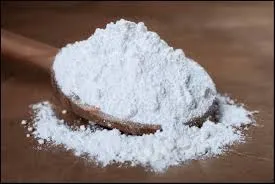
flavour enhancer e621
Understanding Flavor Enhancer E621 An Insight into Monosodium Glutamate
Flavor enhancer E621, commonly known as monosodium glutamate (MSG), has been a subject of both culinary enthusiasm and public controversy. As a widely used additive, MSG enhances the umami flavor in a variety of foods, making it a popular choice among chefs and food manufacturers alike. This article explores what E621 is, its uses, potential health concerns, and its role in modern cuisine.
What is E621?
E621 is a food additive that is the sodium salt of glutamic acid, an amino acid that naturally occurs in various foods such as tomatoes, cheese, and soy sauce. MSG is synthesized from fermented starch, sugar beets, sugar cane, or molasses. When added to food, it intensifies the existing flavors and adds a savory taste, known as umami. The umami flavor is often described as a rich, savory flavor that is distinct from the basic tastes of sweet, salty, bitter, and sour.
Culinary Uses
MSG is prevalent in a multitude of cuisines, especially in Asian cooking, such as Chinese, Japanese, and Korean dishes. It is often used in soups, broths, sauces, and pre-packaged foods, including snacks like chips, instant noodles, and frozen meals. The reason for its popularity is its ability to enhance flavors without altering the fundamental taste of the dish. Chefs appreciate MSG for its versatility and ability to bring out the best in their culinary creations.
In addition to enhancing flavor, MSG can contribute to the overall palatability of low-fat and low-sodium products, making them more appealing to consumers. This has led to its incorporation into health-focused foods, aiming to provide satisfying taste profiles without excessive use of salt or fats.
Health Concerns and Debates
flavour enhancer e621

Despite its widespread use, MSG has faced scrutiny and skepticism regarding its safety. In the late 1960s, a term called Chinese Restaurant Syndrome emerged, referring to a group of symptoms such as headaches, flushing, and sweating, which some individuals reported after consuming Chinese food. Subsequent research has produced mixed results, with many studies failing to find a direct link between MSG and adverse health effects in the general population.
The Food and Drug Administration (FDA) and other international health organizations, including the World Health Organization (WHO), have classified MSG as safe for consumption when used in normal amounts. Adverse reactions may occur in a small subset of the population, particularly in individuals who consume large quantities. As a result, it is often recommended that those who suspect an intolerance should monitor their intake.
The Role of E621 in Modern Cuisine
As culinary practices evolve, so too does the understanding of flavor enhancers like E621. Chefs and food technologists increasingly recognize MSG as a valuable ingredient, not just a mere additive. It allows them to craft dishes that are globally influenced and satisfying, appealing to a broad range of palates.
Furthermore, with the rise in demand for plant-based and low-sodium foods, MSG offers a practical solution to enhance flavor without compromising dietary restrictions. As consumers continue to seek transparency in food labeling, many brands are now opting to highlight the presence of MSG as a natural component of flavor enhancement, addressing misconceptions and promoting informed consumption.
Conclusion
E621, or monosodium glutamate, remains a fascinating ingredient at the intersection of science and gastronomy. While it has been the subject of much debate, its ability to amplify flavor in food cannot be overlooked. With a focus on transparency and health, MSG can continue to play an essential role in enhancing the culinary experience. As with all additives, moderation is crucial, and understanding the science behind MSG empowers consumers to enjoy their food without unnecessary concerns.
-
Pure Sodium Dichloroisocyanurate Dihydrate | Powerful DisinfectantNewsAug.29,2025
-
Industrial Chemicals: Quality & Purity for Every IndustryNewsAug.28,2025
-
Nitrile Rubber Honoring Strict Production StandardsNewsAug.22,2025
-
Aspartame Ingredients Honoring Food Safety ValuesNewsAug.22,2025
-
Fertilizer for Balanced Plant NutritionNewsAug.22,2025
-
Cyanide Gold Processing with High Purity AdditivesNewsAug.22,2025
-
Formic Acid in Textile Dyeing ApplicationsNewsAug.22,2025
Hebei Tenger Chemical Technology Co., Ltd. focuses on the chemical industry and is committed to the export service of chemical raw materials.
-

view more DiethanolisopropanolamineIn the ever-growing field of chemical solutions, diethanolisopropanolamine (DEIPA) stands out as a versatile and important compound. Due to its unique chemical structure and properties, DEIPA is of interest to various industries including construction, personal care, and agriculture. -

view more TriisopropanolamineTriisopropanolamine (TIPA) alkanol amine substance, is a kind of alcohol amine compound with amino and alcohol hydroxyl, and because of its molecules contains both amino and hydroxyl. -

view more Tetramethyl Thiuram DisulfideTetramethyl thiuram disulfide, also known as TMTD, is a white to light-yellow powder with a distinct sulfur-like odor. It is soluble in organic solvents such as benzene, acetone, and ethyl acetate, making it highly versatile for use in different formulations. TMTD is known for its excellent vulcanization acceleration properties, which makes it a key ingredient in the production of rubber products. Additionally, it acts as an effective fungicide and bactericide, making it valuable in agricultural applications. Its high purity and stability ensure consistent performance, making it a preferred choice for manufacturers across various industries.





